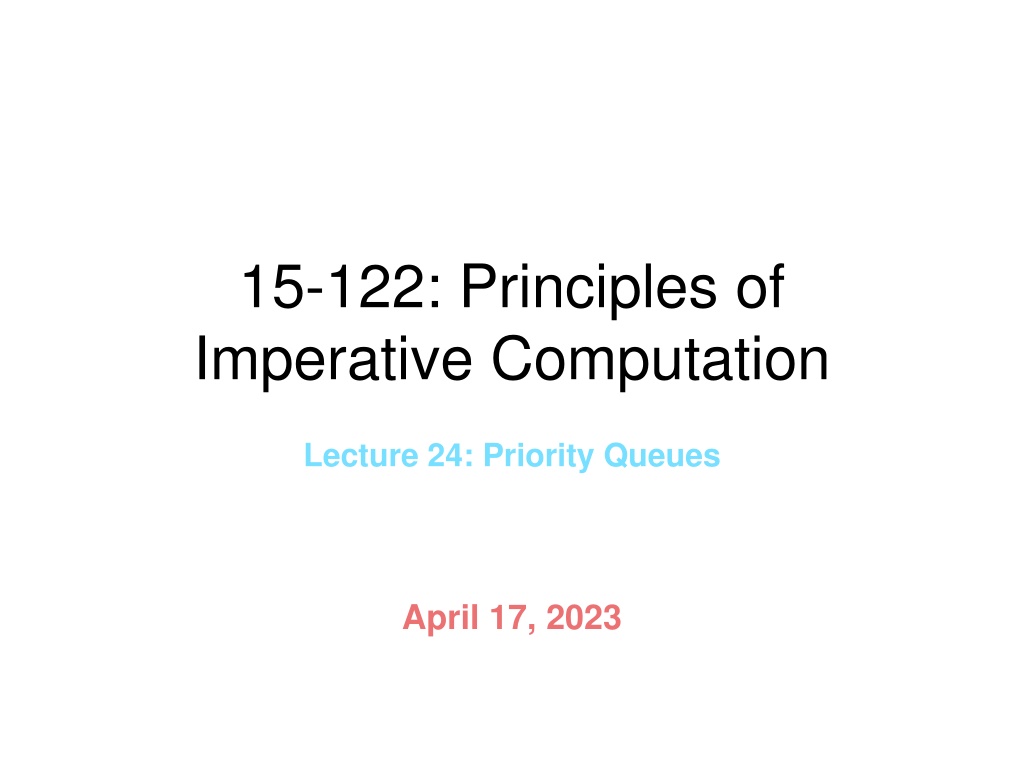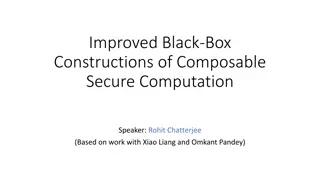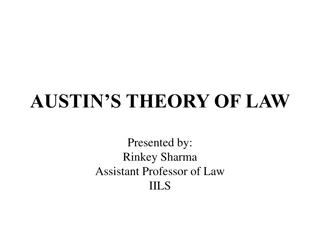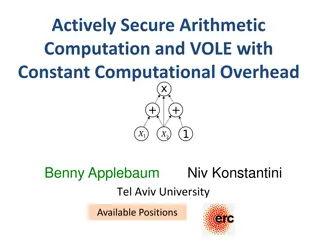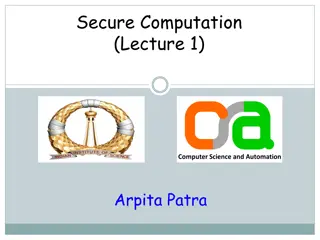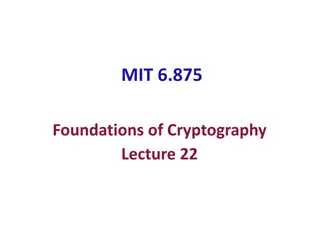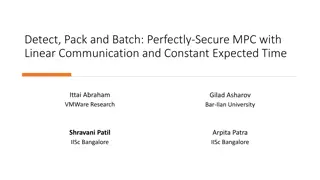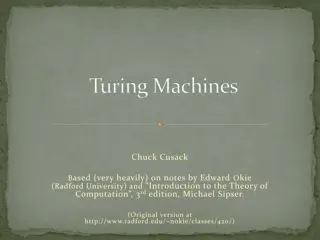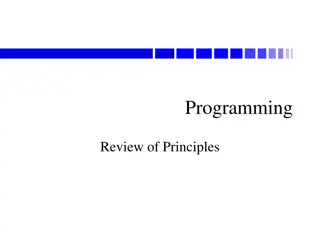15-122: Principles of Imperative Computation.
Explore the fundamentals of priority queues, including how they prioritize elements based on specific criteria, such as emergencies or deadlines. Learn about key operations like adding and retrieving elements, with examples from different real-world scenarios. Delve into creating a Priority Queue Interface to enhance functionality and efficiency in managing tasks.
Download Presentation

Please find below an Image/Link to download the presentation.
The content on the website is provided AS IS for your information and personal use only. It may not be sold, licensed, or shared on other websites without obtaining consent from the author.If you encounter any issues during the download, it is possible that the publisher has removed the file from their server.
You are allowed to download the files provided on this website for personal or commercial use, subject to the condition that they are used lawfully. All files are the property of their respective owners.
The content on the website is provided AS IS for your information and personal use only. It may not be sold, licensed, or shared on other websites without obtaining consent from the author.
E N D
Presentation Transcript
15-122: Principles of Imperative Computation Lecture 24: Priority Queues April 17, 2023
Today Last lecture: Graph Search: DFS and BFS Today s lecture: Priority queues: heaps, adding to heaps, removing from heaps, and representing heaps Announcements: Last written assignment is due today by 9PM Last programming assignment is due tomorrow by 9PM (you can use 2 extra grace days for this assignment) The final exam is on Sunday, April 30 from 8:30AM to 11:30AM in Room 2163 1
Review Work lists: Data structures that o Store elements and o Give them back one at a time in some order Stacks: Retrieve the element that was inserted most recently Queues: Retrieve the element that has been there longest Priorityqueues: Retrieve the most interesting element Today 2
The Work List Interface Recall the work list interface template: Now, fully generic Work List Interface typedef void* elem; // Decided by client // typedef ______* wl_t; bool wl_empty(wl_t W) /*@requires W != NULL; @*/ ; wl_t wl_new() /*@ensures \result != NULL && wl_empty(\result); @*/ ; void wl_add(wl_t W, elem e) /*@requires W != NULL && e != NULL; /*@ensures !wl_empty(W); @*/ @*/ ; elem wl_retrieve(wl_t W) /*@requires W != NULL && !wl_empty(W); /*@requires \result != NULL; This is not the interface of an actual data structure but a general template for the work lists we are studying @*/ @*/ ; 3
Priority Queues Retrieve the most interesting element o Elements are given priorities o Retrieve the element with the highest priority o Several elements may have the same priority Examples: o Emergency room Highest priority = most severe condition o Processes in an OS Highest priority = well, it s complicated o Homework due Highest priority = 5
Towards a Priority Queue Interface It will be convenient to have a peek function o It returns the highest priority element without removing it Priority Queue Interface This is the work list interface with names changed typedef void* elem; // Decided by client // typedef ______* pq_t; bool pq_empty(pq_t Q) /*@requires Q != NULL; @*/ ; pq_t pq_new() /*@ensures \result != NULL && pq_empty(\result); @*/ ; void pq_add(pq_t Q, elem e) /*@requires Q != NULL && e != NULL; /*@ensures !pq_empty(Q); @*/ @*/ ; elem pq_rem (pq_t Q) /*@requires Q != NULL && !pq_empty(Q); /*@ensures \result != NULL; @*/ @*/ ; Added elem pq_peek (pq_t Q) /*@requires Q != NULL && !pq_empty(Q); /*@ensures \result != NULL && !pq_empty(Q); @*/ @*/ ; 6
How to Specify Priorities? 1. Mention it as part of pq_add void pq_add(pq_t Q, elem e, int priority) o How do we assign a priority to an element? The same element should always be given the same priority Priorities should form some kind of order o Do bigger numbers represent higher or lower priorities? People are bad at being consistent Potential for lots of errors 7
How to Specify Priorities? 2. Make the priority part of an elem o And provide a way to retrieve it int get_priority(elem e) o How do we assign a priority to an element? The same element should always be given the same priority Priorities should form some kind of order o Do bigger numbers represent higher or lower priorities? Same issues as (1) as (1) Same issues The problem is that assigning a priority to an element is hard for people But given two elements, saying which one has higher priority is easier 8
How to Specify Priorities? 3. Have a way to tell which of two elements has higher priority Given two elements, saying which one has higher priority is easier bool has_higher_priority(elem e1, elem e2) o It returns true if e1 has strictly higher priority than e2 o It is the client who should provide this function Only they know what elem is o For the priority queue library to be generic, we turn it into a type definition typedef bool has_higher_priority_fn(elem e1, elem e2); and have pq_new take a priority function as input 9
The Priority Queue Interface f(e1, e2) returns true if e1 has strictly higher priority than e2 Priority Queue Interface typedef void* elem; // Decided by client typedef bool has_higher_priority_fn(elem e1, elem e2); // typedef ______* pq_t; bool pq_empty(pq_t Q) /*@requires Q != NULL; We commit to the priority function when creating the queue @*/ ; pq_t pq_new(has_higher_priority_fn* prio) /*@requires prio != NULL; @*/ /*@ensures \result != NULL && pq_empty(\result); @*/ ; void pq_add(pq_t Q, elem e) /*@requires Q != NULL && e != NULL; /*@ensures !pq_empty(Q); @*/ @*/ ; elem pq_rem (pq_t Q) /*@requires Q != NULL && !pq_empty(Q); /*@ensures \result != NULL; @*/ @*/ ; elem pq_peek (pq_t Q) /*@requires Q != NULL && !pq_empty(Q); /*@ensures \result != NULL && !pq_empty(Q); @*/ @*/ ; 10
Priority Queue Implementations Unsorted array/list Sorted array/list AVL trees Heaps O(1) O(n) O(log n) O(log n) add O(n) O(1) O(log n) O(log n) rem O(n) O(1) O(log n) O(1) peek Cost of add using arrays are amortized 11
Heaps 12
Nothing to do with the memory segment Heaps A heap is a type of binary tree used to implement priority queues Since add and rem have cost O(log n), a heap is a balanced binary tree o In fact, they are as balanced as a tree can be Since peek has cost O(1), the highest priority element must be at the root o In fact, the elements on any path from a leaf to the root are ordered in increasing priority order highest priority lower priority 13
Heaps Invariants 1. Shape invariant 2. Ordering invariant o The priority of a child is lower than or equal to the priority of its parent or equivalently o The priority of a parent is higher than or equal to the priority of its children higher priority Point of view of child Point of view of parent Both points of view will come handy 14
The Many Things Called Heaps A heap is a type of binary tree used to implement priority queues A heap is also any priority queue where priorities are integers o It is a min-heap if smaller numbers represent higher priorities o It is a max-heap if bigger numbers represent higher priorities A heap is the segment of memory we called allocated memory This is a significant source of confusion 15
Min-heaps Any priority queue where priorities are integers and smaller numbers represent higher priorities In practice, most priority queues are implemented as min-heaps o And heap is also shorthand for min-heap more confusion! Most of our examples will be min-heaps 1. Shape invariant 2. Ordering invariant The valueof a child is the value of its parent or equivalently The valueof a parent is the value of its children larger value 16
Activity Draw a min-heap with values 1, 2, 2, 9, 7 17
Activity Draw a min-heap with values 1, 2, 2, 9, 7 1 1 2 2 2 2 7 9 9 7 1 1 2 9 2 7 2 7 9 2 and several more 18
Insertion Strategy Maintain the shape invariant larger value Temporary break and then restore the ordering invariant Min-heap version This is similar to what we did for AVL trees Maintain the ordering invariant Temporary break and then restore the height invariant 20
Example We start by putting the new element in the only place that maintains the shape invariant o But doing so may break the ordering invariant 2 2 Insert 1 4 7 4 7 9 4 8 9 4 8 1 This is a min-heap 1 must go here This violates the ordering invariant o How to fix it? 21
Swapping Up How to fix the violation? o Swap the child with the parent We swapped 7 and 1 2 2 Swap up 4 7 4 1 9 4 8 1 9 4 8 7 o Swapping up may introduce a new violation This introduced a new violation of the ordering invariant one level up 22
Swapping Up How to fix the violation? o Swap the child with the parent We swapped 2 and 1 2 1 Swap up 4 1 4 2 9 4 8 7 9 4 8 7 We stop when no new violation is introduced o Or we reach the root There are no more violations. This is a valid min-heap 23
Adding an Element General procedure 1. Put the added element in the one place that maintains the shape invariant The leftmost open slot on the last level Or, if the last level is full, the leftmost slot on the next level 2. Repeatedly swap it up with its parent Until the violation is fixed Or we reach the root o There is always at most one violation The overall process is called sifting up For a heap with n elements This costs O(log n) o Because we make at most O(log n) swaps 24
Deletion Strategy Maintain the shape invariant larger value Temporary break and then restore the ordering invariant Min-heap version Same as insertion 26
Example We must return the root And replace it with the only element that maintains the shape invariant 1 9 Rem 4 2 4 2 7 4 8 9 7 4 8 This causes This causes two violations two violations We must return 1 We replace it with 9 Which violation to fix first? 27
Swapping Down Which violation to fix first? o If we swap 4 and 9, we end up with three violations 9 4 Swap down 4 2 9 2 7 4 8 7 4 8 Can we do better? 28
Swapping Down If we swap 9 and 2, we end up with one violation o At most two in general 9 2 Swap down 4 2 4 9 7 4 8 7 4 8 When swapping down, always swap with the child with the highest priority o Smallest value in a min-heap 29
Swapping Down Always swap the child with the highest priority 2 2 Swap down 4 9 4 8 7 4 8 7 4 9 We stop when no new violations are introduced o Or we reach a leaf 30
Removing an Element General procedure 1. Return the root 2. Replace it with the element in the one place that maintains the shape invariant The rightmost element on the last level 3. Repeatedly swap it down with its child that has highest priority Until all violations are fixed Or we reach a leaf o This guarantees there are always at most two violations The overall process is called sifting down For a heap with n elements This costs O(log n) o Because we make at most O(log n) swaps 31
Priority Queue Implementations Unsorted array/list Sorted array/list AVL trees Heaps O(1) O(n) O(log n) O(log n) add O(n) O(1) O(log n) O(log n) rem O(n) O(1) O(log n) O(1) peek Cost of add using arrays are amortized 32
How to Represent a Heap? Borrowing from BSTs, we could use pointers o left child and right child Needed when sifting down o parent node Needed when sifting up 2 typedef struct heap_node heap; struct heap_node { elem data; heap* parent; heap* left; heap* right; }; 4 7 4 That s a lot of pointers to keep track of! o It also takes up a lot of space Try writing the swap function! Can we do better? 34
Understanding Heaps Let s number the nodes level by level starting at 1 1 2 2 3 4 8 4 5 6 7 4 9 Observations: o If a node has number i, its left child has number o If a node has number i, its right child has number o If a node has number i, its parent has number 2i 2i + 1 i/2 35
Understanding Heaps 1 2 2 3 4 8 4 5 6 7 4 9 o If a node has number i, its left child has number o If a node has number i, its right child has number 2i + 1 o If a node has number i, its parent has number 2i i/2 By numbering nodes this way, we can navigate the tree up and down using arithmetic 36
Understanding Heaps 1 2 2 3 4 8 4 5 6 7 4 9 By numbering nodes this way, we can navigate the tree up and down using arithmetic These numbers are contiguous and start at 1 37
Understanding Heaps 1 2 2 3 4 8 4 5 6 7 4 9 These numbers are contiguous and start at 1 Do we know of any data structure that allows accessing data based on consecutive integers? Arrays! 38
Representing Heaps using Arrays 1 2 2 3 4 8 4 5 6 7 4 9 0 1 2 3 4 5 6 2 4 8 7 4 9 For simplicity, we do not use index 0 If a node has number i, its left child has number If a node has number i, its right child has number 2i + 1 if a node has number i, its parent has number 2i i/2 39
Representing Heaps using Arrays add will initially put a new element at index 7 1 2 2 3 4 8 4 5 6 7 4 9 0 1 2 3 4 5 6 2 4 8 7 4 9 40
Representing Heaps using Arrays add will initially put a new element at index 7 remove will yank the element at index 6 1 2 2 3 4 8 4 5 6 7 4 9 We are better off having unused positions 0 1 2 3 4 5 6 7 8 9 2 4 8 7 4 9 41
Types of Work Lists Priority Queue Interface The work lists we considered so far were unbounded o There was no maximum to the number of elements they could hold typedef void* elem; // Decided by client typedef bool has_higher_priority_fn(elem e1, elem e2); // typedef ______* pq_t; bool pq_empty(pq_t Q) /*@requires Q != NULL; @*/ ; pq_t pq_new(has_higher_priority_fn* prio) /*@requires prio != NULL; @*/ /*@ensures \result != NULL && pq_empty(\result); @*/ ; A bounded work list has a capacity fixed at creation time o We can t add elements once full void pq_add(pq_t Q, elem e) /*@requires Q != NULL && e != NULL; /*@ensures !pq_empty(Q); @*/ @*/ ; elem pq_rem (pq_t Q) /*@requires Q != NULL && !pq_empty(Q); /*@ensures \result != NULL; @*/ @*/ ; In practice o Stacks are typically unbounded o Queues can be either o Priority queues are often bounded elem pq_peek (pq_t Q) /*@requires Q != NULL && !pq_empty(Q); /*@ensures \result != NULL && !pq_empty(Q); @*/ @*/ ; 44
The Bounded Priority Queue Interface pq_new now takes the capacity of the priority queue Bounded Priority Queue Interface typedef void* elem; // Decided by client typedef bool has_higher_priority_fn(elem e1, elem e2); // typedef ______* pq_t; We need a new function to check if it is full o pq_full bool pq_empty(pq_t Q) /*@requires Q != NULL; @*/ ; bool pq_full(pq_t Q) /*@requires Q != NULL; @*/ ; pq_t pq_new(int capacity, has_higher_priority_fn* prio) /*@requires capacity > 0 && prio != NULL; @*/ /*@ensures \result != NULL && pq_empty(\result); We cannot insert an element into a full priority queue @*/ ; void pq_add(pq_t Q, elem e) /*@requires Q != NULL && !pq_full(Q) && e != NULL; @*/ /*@ensures !pq_empty(Q); @*/ ; A priority queue is not full after removing an element elem pq_rem (pq_t Q) /*@requires Q != NULL && !pq_empty(Q); /*@ensures \result != NULL && !pq_full(Q); @*/ @*/ ; elem pq_peek (pq_t Q) /*@requires Q != NULL && !pq_empty(Q); /*@ensures \result != NULL && !pq_empty(Q); @*/ @*/ ; 45
